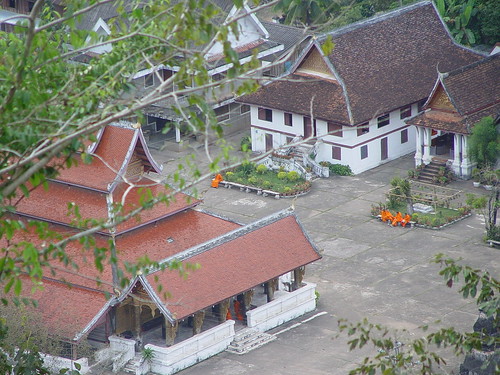
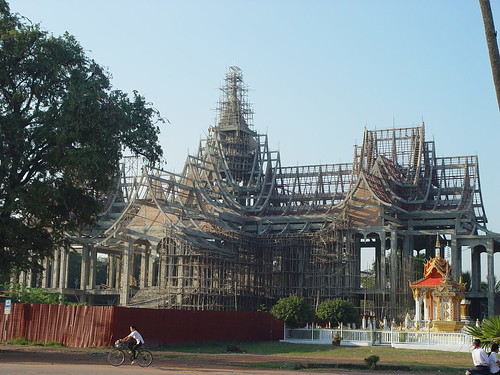
In Laos, you'll often find the haw kawng, a drum tower to call the community and monks to prayer. In the US, this is less common to avoid disturbing the neighbors.

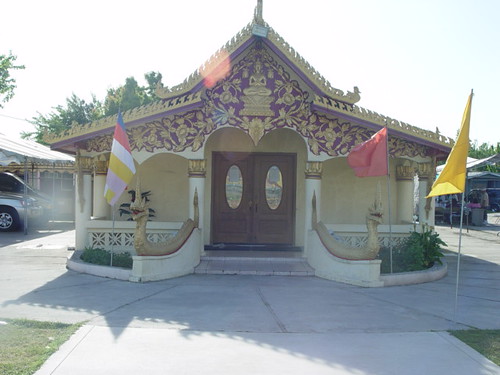
The kuti is the residential quarters for the monks or nuns. In most cases, this building is detached, but in some cities, space is at a premium.

The that/thaat or stupa is one of the focal points of a wat. Essentially a reliquary, many are said to contain the relics or even ashes of the Buddha.
They are also filled with mantras and prayers and other 'precious' objects. Not necessarily -expensive- objects because it's the symbol of the object, not the value that is important in this case. It's generally held that the greater quantity of wonderful symbolic objects filled into the that, the stronger energy of the that will be for the community and the world.
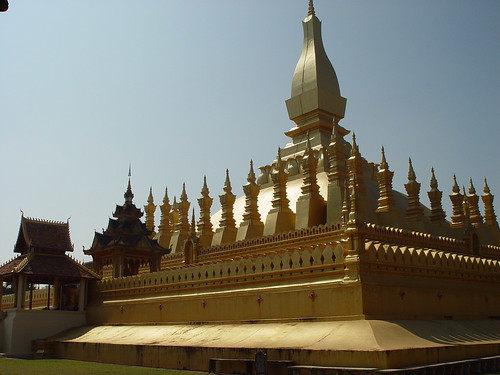
The architecture of a that has deeper metaphysical symbolism, but we'll save that for a different discussion.
The that kaduk or bone stupas are where a wat places the ashes or memorials of the faithful.
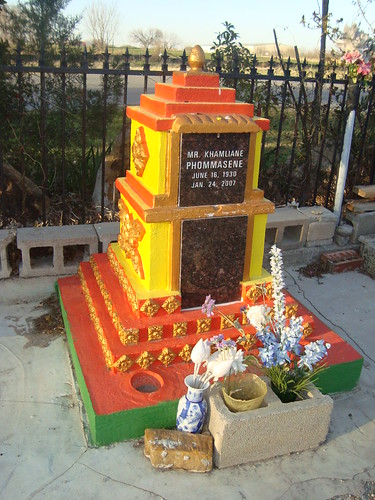
The sala is where the laity come to listen to the tham or Buddhist teachings.
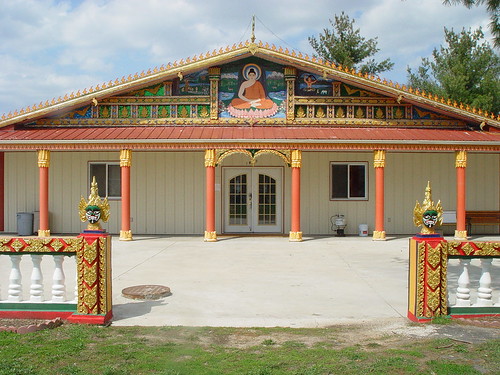
The haw phi khun wat is a spirit house for the temple's earth spirit. This feature is not necessarily as prominent in many of the Wat Lao in the US. You'll find images of the nak and other traditional figures such as Mae Torani around the compound, and images depicting scenes from the life of the Buddha.
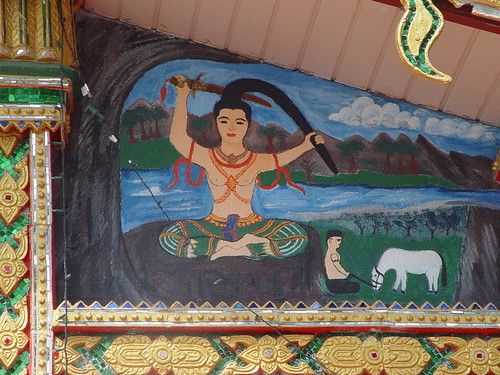
You will also find the haw tai where the library of Buddhist manuscripts are stored. In some cases these are modern style books, in others, they may be palm leaf manuscripts. 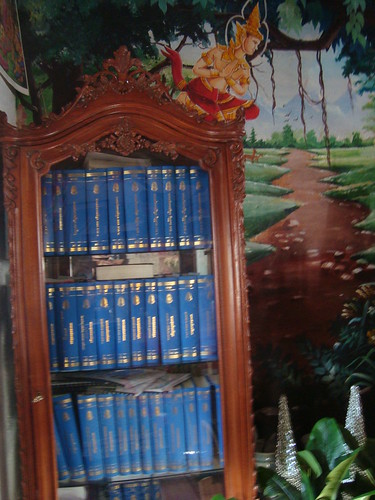
There are 3 basic traditional Wat Lao styles, typically identified by the sim architecture styles: Luang Prabang, Xieng Khouang and Vientiane. I'll post examples later.
And there you have it!

The architecture of a that has deeper metaphysical symbolism, but we'll save that for a different discussion.
The that kaduk or bone stupas are where a wat places the ashes or memorials of the faithful.

The sala is where the laity come to listen to the tham or Buddhist teachings.

The haw phi khun wat is a spirit house for the temple's earth spirit. This feature is not necessarily as prominent in many of the Wat Lao in the US. You'll find images of the nak and other traditional figures such as Mae Torani around the compound, and images depicting scenes from the life of the Buddha.


There are 3 basic traditional Wat Lao styles, typically identified by the sim architecture styles: Luang Prabang, Xieng Khouang and Vientiane. I'll post examples later.
And there you have it!
If you're going to visit a wat, please remember:
- Dress neatly- shorts and sleeveless shirts have traditionally been frowned upon, at least inside the sala.
- Take your shoes off when you enter any building containing a Buddha, which is considered a sacred object.
- Do not climb on the Buddha statues.
- When sitting in one of the religious building, keep your feet pointed away from Buddha images and monks. The lotus position or the 'mermaid' pose with your legs folded to the side and feet pointing backwards are the most common.
1 comment:
Admirable work ThaoWorra.I enjoy watching and reading your work. Your documentary will be very useful for our Lao new generation to come.
Pa Banlang
Post a Comment